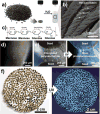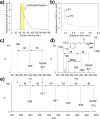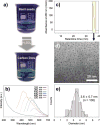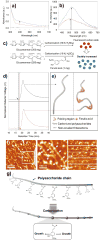Phenolic condensation and facilitation of fluorescent carbon dot formation: a mechanism study
- PMID: 29071324
- PMCID: PMC5687888
- DOI: 10.1039/c7nr04170e
Phenolic condensation and facilitation of fluorescent carbon dot formation: a mechanism study
Abstract
Fluorescent carbon dots have received considerable attention as a result of their accessibility and potential applications. Although several prior studies have demonstrated that nearly any organic compound can be converted into carbon dots by chemical carbonization processes, mechanisms explaining the formation of carbon dots still remain unclear. Herein, we propose a seed-growth mechanism of carbon dot formation facilitated by ferulic acid, a widespread and naturally occurring phenolic compound in the seeds of Ocimum basilicum (basil). Ferulic acid triggers the local condensation of polysaccharide chains and forms catalytic core regions resulting in nanoscale carbonization. Our study indicates that carbon dots generated from natural sources might share the similar mechanism of phenolic compound mediated nanoscale condensation followed by core carbonization.
Conflict of interest statement
There are no conflicts of interest to declare.
Figures




References
-
- Lim SY, Shen W, Gao Z. Chem. Soc. Rev. 2015;44:362–381. - PubMed
-
- Li H, Kang Z, Liu Y, Lee S-T. J. Mater. Chem. 2012;22:24230–24225.
-
- Baker SN, Baker GA. Angew. Chem. Int. Ed. 2010;49:6726–6744. - PubMed
-
- Jiang K, Sun S, Zhang L, Lu Y, Wu A, Cai C, Lin H. Angew. Chem. Int. Ed. 2015;54:5360–5363. - PubMed
-
- Choi Y, Kim S, Choi M-H, Ryoo S-R, Park J, Min D-H, Kim B-S. Adv. Funct. Mater. 2014;24:5781–5789.
Grants and funding
LinkOut - more resources
Full Text Sources
Other Literature Sources

